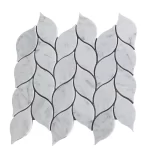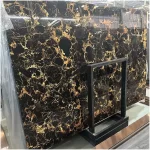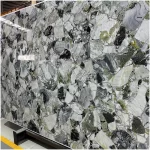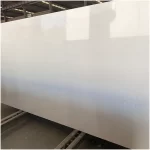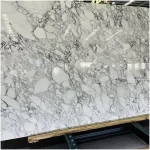According to the product type, the natural decorative stone plates in the national standard are divided into conventional plates, thin plates, ultra-thin plates and thick plates.
Conventional board: 20mm thick
Thin plate: 10mm -15mm thick
Ultra-thin board: <8mm thick (for weight reduction requirements of buildings, or to save materials)
Thick plates: plates thicker than 20mm (used on stressed ground or external walls)
The mainstream conventional board thickness in the foreign stone market is 20mm. In order to pursue low prices in the domestic stone market, the thickness of the currently used board in the market is lower than the national standard.
Influence of thickness of stone plate
Impact on cost
The cut thickness of block material will affect the output rate. The thinner the plate, the higher the output rate and the lower the price.
For example, the marble output rate, assuming the 2.5MM saw blade thickness
Square slabs per cubic meter of marble block:
18 thickness can produce 45.5 square meters
20 thickness can produce 41.7 square meters of sheet
25 thickness can produce 34.5 square meters of plate
30 thickness can produce 29.4 square meters of sheet
△The comparison of the above model is only to show the difference in thickness
Impact on stone quality
The thinner the sheet, the weaker the compression resistance:
The sheet is thin, with poor compression resistance, and is easily damaged; the sheet is thick, with strong compression resistance, and the sheet is not easily damaged.
△Stone crack
There may be lesions
If the board is too thin, it may cause the color of cement and other adhesives to reverse osmosis and affect the appearance;
Sheets that are too thin are more susceptible to lesions than thick plates: they are easily deformed, warped, and hollow.
△Cement reversed from the back of the stone to the surface
Impact on service life
Because of its peculiarity, stone can be polished and refurbished after a period of use to make it shine again.
Stones will wear to a certain extent during the sanding and refurbishing process. Stones that are too thin may have quality risks over time.


